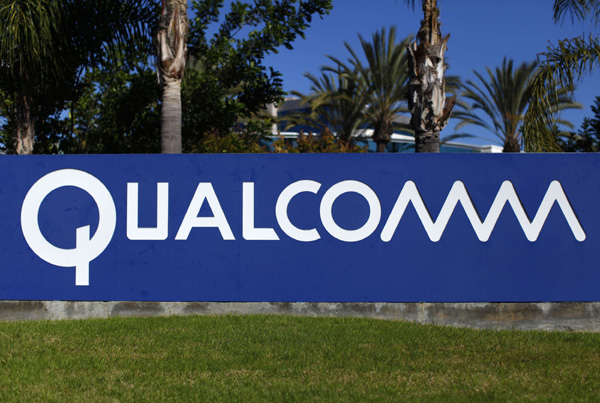High royalties key reason behind Qualcomm fine: NDRC
Updated: 2015-02-10 11:48
By LanLan and Gao Yuan(chinadaily.com.cn)
|
|||||||||
 |
|
A Qualcomm sign is pictured in front of one of its many buildings in San Diego, California November 5, 2014. [Photo/Agencies] |
Related: China slaps largest antitrust fine by Lan Lan and Gao Yuan
Qualcomm Incorporated, the world's largest chipmaker, announced Tuesday US time that it will pay a fine of 6.08 billion yuan ($975 million).
The National Development and Reform Commission (NDRC) Administrative Sanction Decision found that Qualcomm has violated the country's Anti-Monopoly Law.
"Qualcomm will not pursue further legal proceedings contesting the NDRC's findings," Qualcomm released in a statement.
Qualcomm said it has reached a resolution with the NDRC regarding the regulator's 14 month investigation of the chipmaker under China's Anti-Monopoly Law.
"We are pleased that the investigation has concluded and believe that our licensing business is now well positioned to fully participate in China's rapidly accelerating adoption of our 3G/4G technology," said Derek Aberle, president of Qualcomm. "We appreciate the NDRC's acknowledgment of the value and importance of Qualcomm's technology and many contributions to China, and look forward to its future support of our business in China."
Qualcomm has agreed to implement a rectification plan that modifies certain aspects of its business practices in China to fully satisfy the requirements set by the NDRC. According to the company's press release, the company is disappointed with the results of the investigation but is pleased that the NDRC has approved the company's rectification plan.
Key terms of the rectification plan includes that Qualcomm will offer licenses to its current 3G and 4G essential Chinese patents separately from licenses of its other patents and it will provide patent lists during the negotiation process.
Qualcomm also said it plans to continue to grow its investments and expand collaborations in China, including with China's mobile operators, handset and device suppliers, and within the Chinese semiconductor sector.

 Farmer builds sports car out of wood
Farmer builds sports car out of wood
 Bleak outlook for art students six months after graduation
Bleak outlook for art students six months after graduation
 US launches drive to save monarch butterfly
US launches drive to save monarch butterfly
 Police hone skills before heading for mission
Police hone skills before heading for mission
 Listen to your heartbeat at Times Square
Listen to your heartbeat at Times Square
 Sam Smith triumphs with four Grammy wins
Sam Smith triumphs with four Grammy wins
 Top 10 ways to spend your year-end bonuses
Top 10 ways to spend your year-end bonuses
 Paintings by DPRK's Mansudae Art Studio debut in Shenyang
Paintings by DPRK's Mansudae Art Studio debut in Shenyang
Most Viewed
Editor's Picks

|

|

|

|

|

|
Today's Top News
High royalties key reason behind Qualcomm fine: NDRC
Net regulator to meet US ambassador on WeChat
The peeping eyes of the United States
January inflation cools to 0.8%
Qualcomm to pay $975m fine for antitrust violation
Dalai Lama meeting 'unnecessary provocation'
Chinese Navy officers end US tour
Times Square: a Lunar hotspot?
US Weekly

|

|








